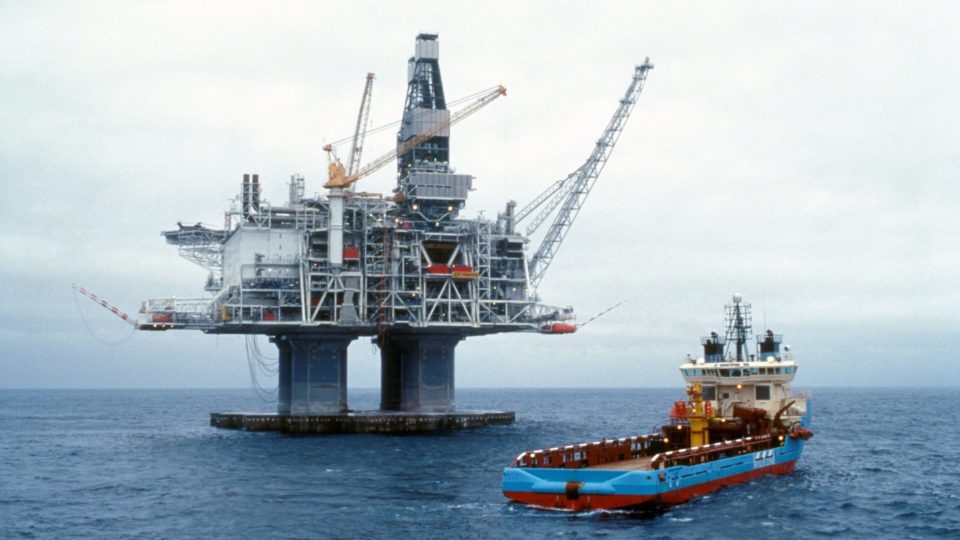Energy fuels our lives. Canada’s oil and natural gas industry always strives to meet that need in an environmentally and socially responsible way, through innovation and technology. Across the industry, there is real dedication to reducing emissions, using water wisely, and reducing other impacts. Companies invest in, share, and implement technology and ideas.
Canada’s oil, natural gas and oil sands producers are part of a high-tech, knowledge-based industry. New technology and innovation are critical to developing Canada’s resources and improving environmental performance.
To invent, test and commercialize new technologies, the industry invests billions of dollars every year. According to Statistics Canada, Canadian businesses reported spending an average of over $9 billion on environmental protection in 2018, 2019 and 2020 (the most recent years for which Statistics Canada has published data). The oil and natural gas extraction industry spent more than other industries, accounting for one-third of the environmental protection expenditures (averaging over $3 billion per year), over this period. (Source: Statistics Canada Table 38-10-0130-01)
Energy in action: Case studies
Below are just a few of the actions Canada’s oil and natural gas producers are taking to lower emissions.
Waste heat recovery units (WHRU)
Reducing emissions means operating as efficiently as possible, which in turn means capturing a “waste” product and finding another use for it. At oil and natural gas sites, heat is generated from a variety of processes and equipment. Instead of releasing heat into the air, it can be re-directed to another process, avoiding the need to burn additional fuel to create more heat or generate electricity.
Waste heat recovery units (WHRUs) are heat exchangers that capture heat from high-temperature processes. There are hundreds of examples of WHRUs in action across the energy industry – like these:
- Birchcliff Energy’s Pouce Coupe Gas Plant in northwestern Alberta processes up to 340 million cubic feet of natural gas daily. Four WHRUs at the plant capture heat from compressors, and the heat is then used elsewhere in the plant. The result: total emissions from the plant have been reduced by more than 15,000 tonnes of carbon dioxide (CO2) annually, about the same as emissions from 5,000 cars. The heat recovery program is so successful, Birchcliff is installing another WHRU at Pouce Coupe, expected to cost over $2 million dollars.
- NuVista Energy produces natural gas and natural gas liquids, mainly from properties near Grande Prairie in northwestern Alberta. Since 2018, NuVista has invested more than $7 million to install 13 waste heat recovery units on all its compressors, thus avoiding emissions of 32,000 tonnes each year. The captured heat is used for site heating, and the energy saved is equal to taking 9,800 cars off the road every year.
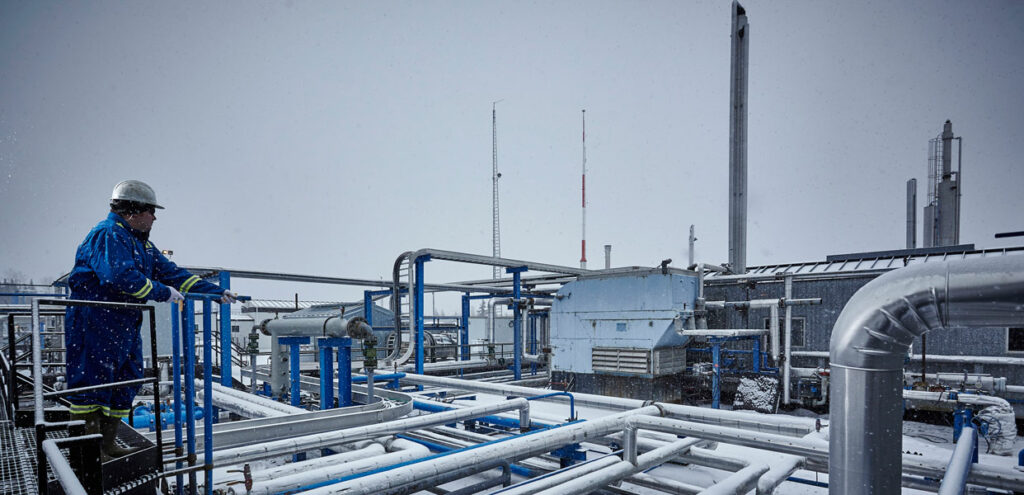
Pneumatic device retrofits
Canadian Natural Resources Limited (Canadian Natural) has a methane reduction plan that includes replacing pneumatic devices, which control natural gas pressure and flow within a facility like a gas processing plant.
Pneumatic devices such as valves and pumps use pressurized natural gas to operate and some devices release small volumes of natural gas (which is mostly methane) as part of normal operation. Canadian Natural’s pneumatic retrofit program combats these small but collectively significant emissions by replacing older devices with new, more efficient ones.
From 2018 to 2022, Canadian Natural has completed over 8,000 pneumatic retrofits and removals resulting in a cumulative reduction of approximately 815,000 tonnes of carbon dioxide equivalent or CO2e. In 2022, Canadian Natural launched a multi-year project to convert approximately 3,800 pneumatic injection pumps in the company’s non-oil sands operations in Alberta and British Columbia to solar configurations. This project will help reduce methane emissions by up to an additional 361,000 tonnes of CO2e/year.
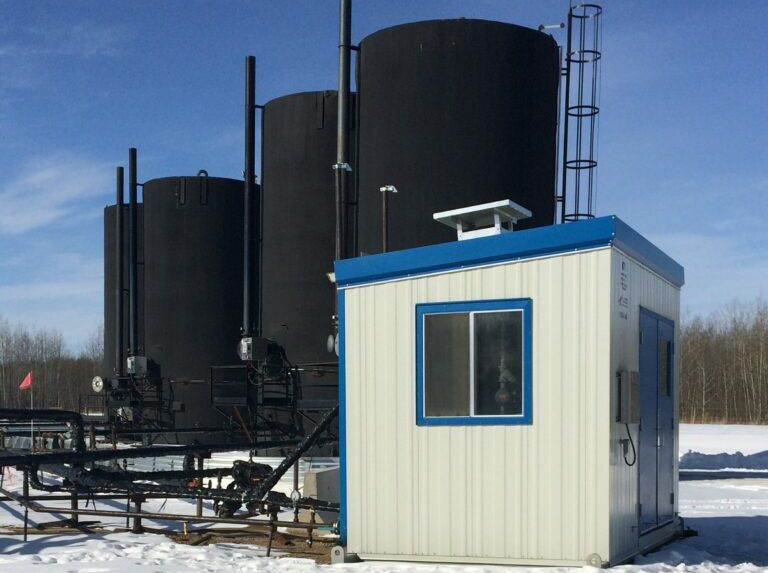
Quest carbon capture
Quest Carbon Capture and Storage (CCS) facility shows how large-scale carbon capture can be a safe and effective way to reduce emissions.
Quest captures about one-third of the CO2 from the upgrading process. This CO2 is compressed to a supercritical state (not quite a gas but not quite a liquid). It’s then sent through a 65 kilometre pipeline to one of three deep wells and injected into a porous sandstone reservoir for safe, permanent storage two kilometres below the surface.
Since it started operating in 2015, Quest has captured and stored more than eight million tons of emissions (as of March 2023). That’s about the same as emissions from 1.8 million cars. Quest is a demonstration project, designed to share knowledge and technology to prove the viability of CCS as a realistic, cost-effective technology for reducing emissions.
Widespread adoption of CCS is one of the key solutions the world needs to reduce greenhouse gas emissions. Quest is a thriving example of how this technology is making a significant contribution to lowering emissions.
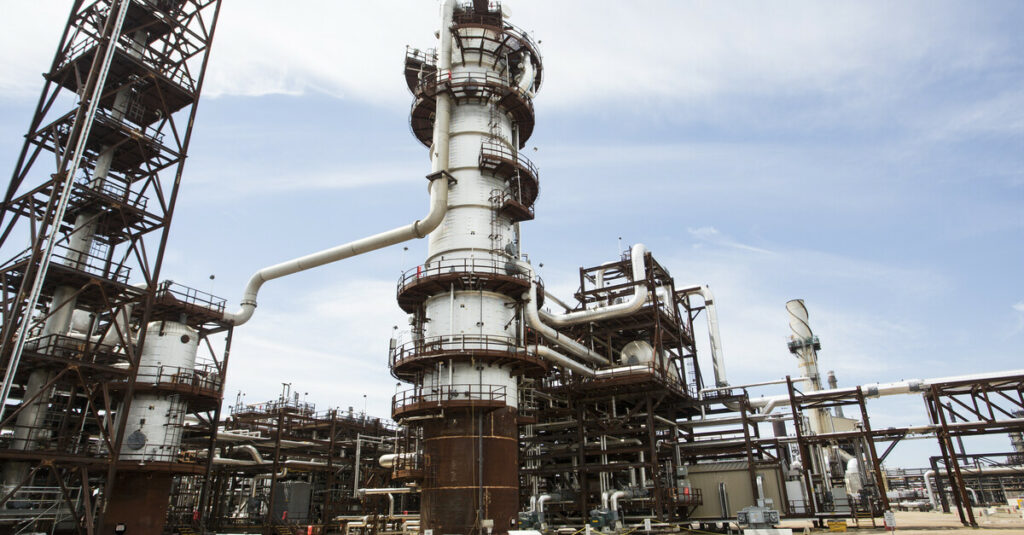
NGIF emissions testing centre
Alberta’s NGIF Emissions Testing Centre program, with funding partners including Natural Resources Canada, Tourmaline Oil, Perpetual Energy, and the University of Calgary are offering real-world testing for new emissions reduction technologies.
Tourmaline Oil, Canada’s largest natural gas producer has a remarkable emissions reduction record: since 2013, while Tourmaline’s production rose by 570%, emissions intensity was cut by 42%. With a corporate focus on significantly reducing emissions – primarily by addressing methane emissions – Tourmaline is an ideal host for the Emissions Testing Centre (ETC).
The NGIF ETC program gives cleantech inventors and startups an opportunity to test their innovations in real industrial conditions at the gas plant, allowing improved understanding of how a given technology could be expected to perform at a commercial scale. In addition to working with engineering and other experts from Tourmaline, inventors also get support and guidance from highly qualified researchers at the University of Calgary. This is just one of Tourmaline’s many initiatives to reduce emissions.
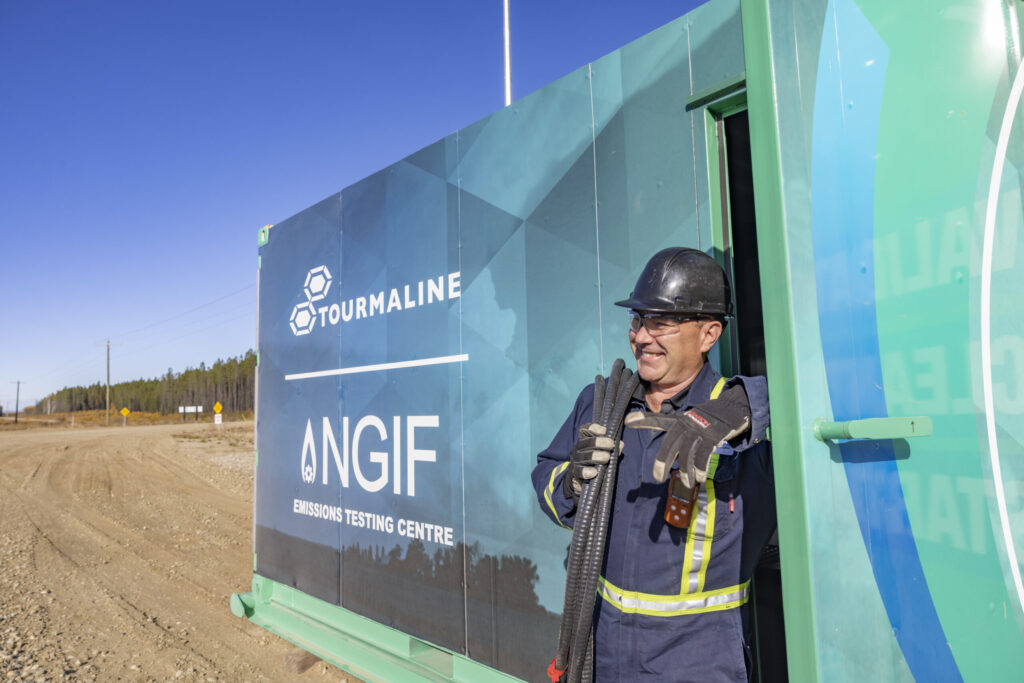
Since the NGIF ETC started in 2021, more than 15 methane detection and monitoring technologies have been tested. Among them:
- Altomaxx Technologies Inc. tested their drone-based methane sensors that detect leak locations along pipelines, at well sites, and at natural gas facilities. The ETC provides Newfoundland-based Altomaxx with a controlled environment to evaluate different drone flight patterns, the accuracy of the emissions sensors, and other data
- Qube Technologies tested their continuous emissions monitoring technology. Calgary-based Qube is a leading provider of environmental monitoring technologies, especially continuous emissions monitoring capable of detecting methane leaks around the clock, every day.
- Kinitics Automation has developed a valve actuator using their ‘Bundled Wire’ technology, which uses shape memory alloys (SMAs) to produce force and displacement. This technology has been tested both at the ETC lab (University of Calgary) and field host sites (Tourmaline).
- Kuva Systems is testing a camera that uses non-thermal short wave infrared light (SWIR) to detect emissions of hydrocarbon gases at the ETC field site (Tourmaline/Perpetual gas plant).
- Westgen Technologies is testing two EPOD instrument air and power units in the field (Tourmaline well site facilities) to evaluate the compressor’s reliability, emission reduction potential, and ability to operate using unprocessed fuel gas under field operating conditions.
Solar-powered facilities
Instead of diesel-powered generators, Crescent Point Energy is taking a different approach by installing larger solar arrays. The company has completed two pilot solar power generation projects to determine the effectiveness, reliability and suitability of solar power for use in operations. One test is at Crescent Point’s office building in Carlyle, a town in southeastern Saskatchewan. This solar installation generates about 90 kilowatts (kW) of electricity. To put this in context, a 100-kW generator can supply from 25 to 50 homes.
Based on the success of these initial projects, Crescent Point is planning additional solar installations at a number of sites in Saskatchewan that are on or adjacent to existing Crescent Point facilities and leases.
After meeting Crescent Point’s needs for electricity, a portion of the power generated will be sold to SaskPower as part of the Power Generation Partner Program (PGPP). This program helps reduce emissions from the overall Saskatchewan power grid – most of SaskPower’s electricity is from coal or natural gas-fired generation plants in addition to smaller amounts of electricity from hydro, wind and solar sources.
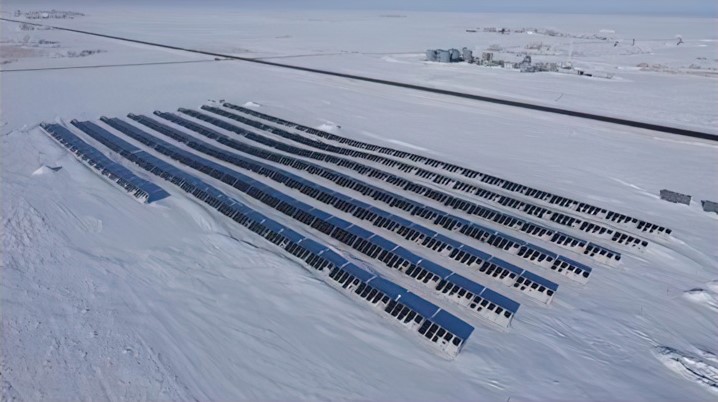
Leak detection and repair (LDAR)
Finding and fixing hard-to-detect methane sources can reduce overall emissions from a wellsite or natural gas facility. Canada’s oil and natural gas producers use a number of methods for leak detection and repair (LDAR). The Alberta Energy Regulator (AER) outlines basic requirements and methods for LDAR, while also accepting proposals for innovative and science-based alternative technologies.
At ARC Resources, fugitive emissions account for roughly 3% of the company’s total emissions. Continuous monitoring helps to identify these emissions sources. ARC has also developed an alternative Fugitive Emissions Management Program (Alt-FEMP) at their Kakwa facility in northwestern Alberta. The program includes aerial and ground-based surveys using two key technologies that scan the facility for methane emissions: optical gas imaging (OGI) cameras, and gas mapping light detection and ranging.
Across all 12 of their facilities in Alberta and B.C., ARC uses continuous emissions monitoring networks to find and fix leaks. Partnering with Qube Technologies, this program employs methane detection units armed with artificial intelligence. These units continuously scan the facility for methane emissions, using inputs from the Qube sensor system and air quality data including wind direction. This information is used to help identify methane emissions and trigger the leak repair process as soon as a leak is detected, resulting in shorter leak duration, which supports further methane reductions.
In 2020, Canadian Natural Resources implemented a FEMP of all its Alberta conventional oil and natural gas sites, implementing more than 4,000 optical gas imaging (OGI) surveys. In 2021, the AER approved three Alt-FEMP pilots for Canadian Natural sites including their heavy oil developments. These Alt-FEMPs combined aerial and vehicle-mounted methane detection as well as ground-based OGI. The pilot technologies allow for increased survey frequency and estimation of emission rates, thereby reducing the potential time a leak can go undetected and aiding in the understanding of emission sources. As a result, Canadian Natural executed over 6,500 total LDAR surveys across the province.
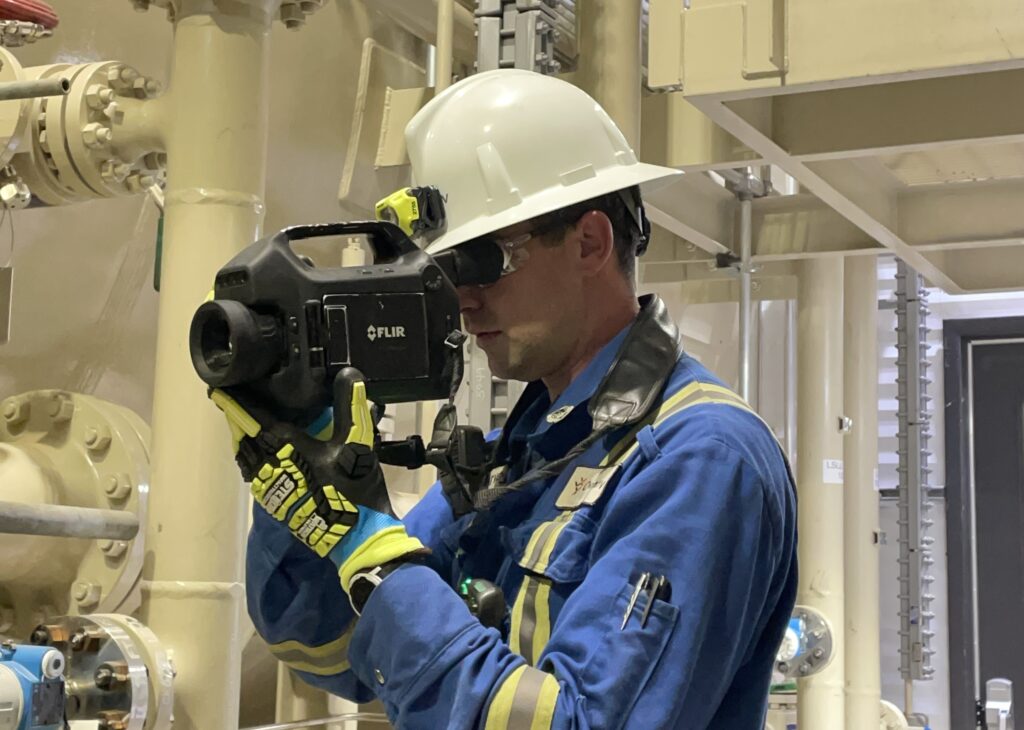
LDAR has been part of Ovintiv’s emissions management practice for nearly 18 years. Using cameras, workers can identify leaks and initiate repairs to reduce methane emissions on-site. OGI surveyors can scan thousands of connection points from a safe distance, using the camera’s technology to see invisible methane leaks. When a leak is detected, the LDAR program includes three components for improvement:
- Repair – OGI surveyors are trained to fix leaks upon detection.
- Documentation – a digital logging system automatically integrates with the company’s regulatory compliance system, to track inspection dates, findings and repairs.
- Data analysis and maintenance – by analyzing LDAR survey data, Ovintiv identifies specific facilities, components and equipment with greater potential for leaks, then proactively directs inspection and maintenance activities for these locations
Vapour recovery units
Using vapour recovery units (VRUs) to capture and conserve methane (natural gas) instead of venting it can make good environmental and business sense.
Since installation at Tourmaline’s West Wolf Lake gas plant in Alberta, VRUs have reduced the plant’s emissions by approximately 5 tonnes of CO2 equivalent per day, or about 1,800 tonnes of CO2 equivalent per year.
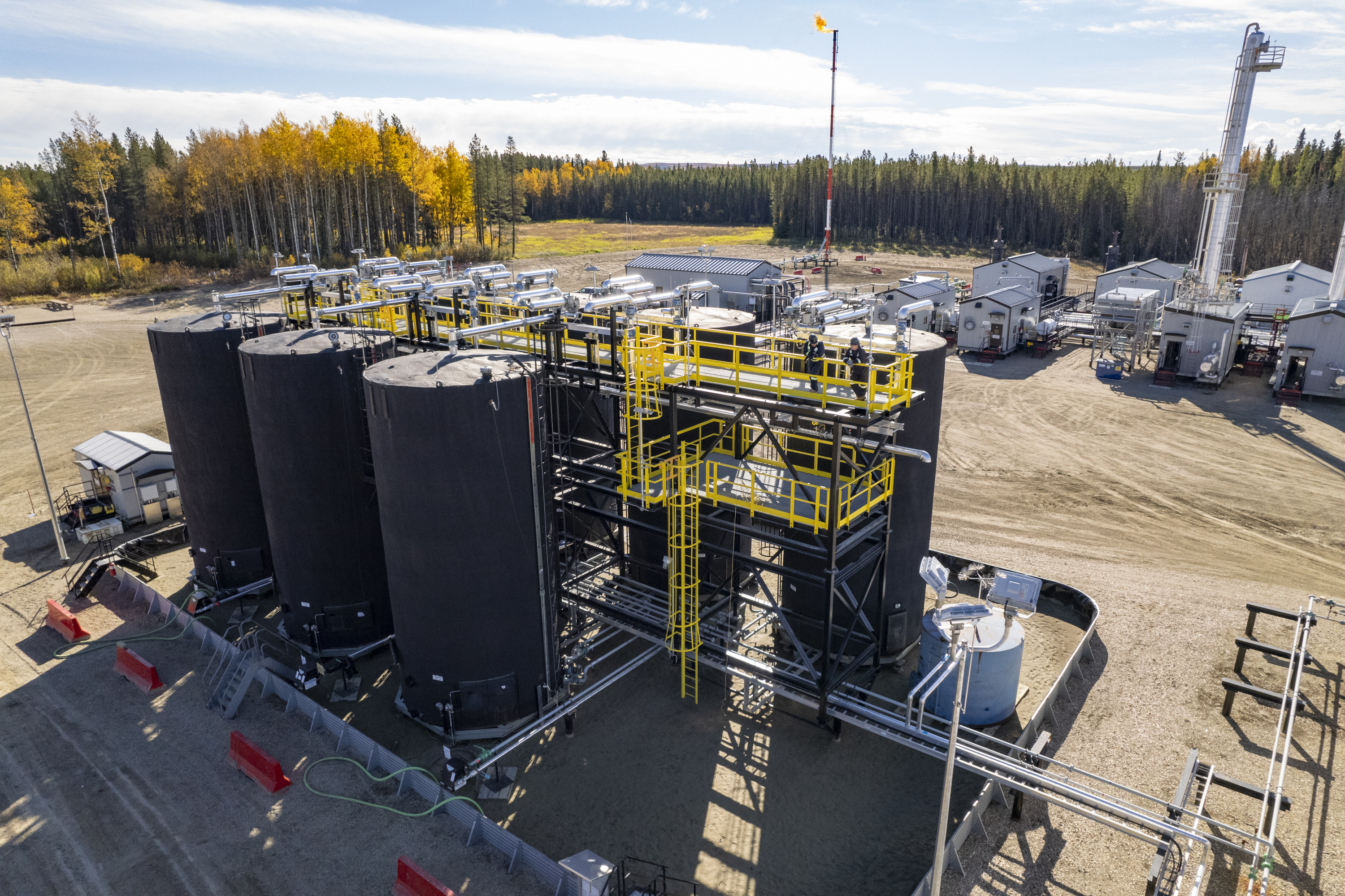
Digital technology
Cenovus Energy has reduced greenhouse gas (GHG) emissions from the White Rose offshore field by taking a close look at emissions sources.
In 2022, Cenovus developed the dashboard to provide real-time information on its offshore operations. The technology went live in September 2022 and is now monitoring operations and emissions at the SeaRose floating production, storage and offloading (FPSO) vessel around the clock. This level of visibility provides the company with an opportunity to be systematic and in control by understanding how operational changes impact performance and, in turn, GHG emissions.
Cenovus also implemented a product called “Emissions AI’ that monitors energy consumers (on-board equipment that uses energy, from heating and lights to pumps and generators) and emissions generated from these sources and uses artificial intelligence (AI) to identify operational inefficiencies. This information provides insights for future improvements and GHG emissions reductions.
From 2007 to 2021, absolute GHG emissions from the SeaRose FPSO were reduced by approximately half, from 640,000 of CO2 equivalent in 2007 to 331,500 CO2 equivalent in 2021.
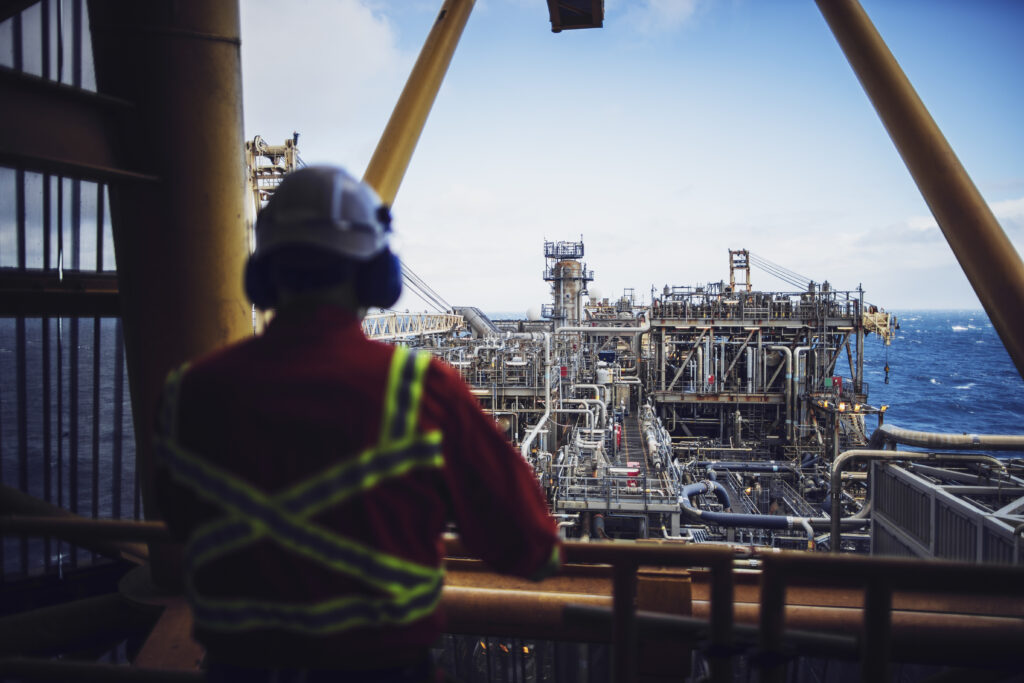
Hibernia offshore GHG emissions reduction
From 2005 to 2021, Hibernia Management and Development Company Ltd. reduced greenhouse gas (GHG) emissions by an estimated 29%.
Hibernia is an offshore production platform located at the Hibernia oil field, 315 kilometres east of St. John’s, NL. The field was discovered in 1979 and production started in 1997. In December 2016, the Hibernia Management and Development Company Ltd. (HMDC) and ExxonMobil Canada announced the Hibernia facility had produced its one billionth barrel of oil.
From 2005 to 2021, Hibernia reduced GHG emissions by 29%, due to several initiatives and operating improvements:
- Installing a WiFi system in the Hibernia platform’s production areas allows for real-time analysis and remote execution, which led to more efficient fuel consumption.
- Fugitive emissions have been reduced by implementing optical imaging leak detection which improves leak detection and repair.
- Flare reduction efforts and reliability from 2005 to 2021 resulted in reducing GHG emissions from flaring by about half.
- In 2020, the two original diesel-powered cranes on the platform were replaced with electric cranes.
